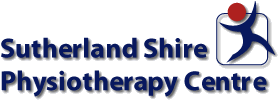|
|
 |
|
| |
Tennis Elbow and Golfer's Elbow
(Lateral and Medial Epicondylalgia) |
|
 |
|
Tennis Elbow and Golfer’s Elbow are conditions where there is degeneration of the soft tissues around the elbow. Tennis elbow occurs on the outer side of the elbow and golfer’s elbow occurs on the inner side of the elbow. Tennis Elbow and Golfer’s Elbow are common injuries. While they often occur in people who play racquet sports and golf, they can also be due to overuse from daily activities such as cleaning and computer use. They are most common in the 35 - 60 years age group, but can occur at any age.
On either side of the elbow there are a number of muscles, that share a common tendon, joining to a small area of bone just above the elbow joint. Injury occurs when repetitive or excessive forces are applied to the tendon on one side of the elbow. The collagen in the tendon then starts to degenerate and swelling and debris build up in the area. This degeneration causes the injured tendon to become weaker. Injured tendons have reduced blood supply compared to normal tendons due to pressure from the swelling and debris around the tendon. This causes tendon injuries to heal slowly.
Treatment
Research has shown that physiotherapy is more successful in treating these injuries than cortisone or other injections or taking a wait and see approach. Our physiotherapy treatments are evidence based and include releasing tight structures around the elbow, mobilising the elbow joint and improving the strength and control of the muscles that move the wrist and elbow.
We will also give you a programme of exercises and stretches to release tight structures around your elbow, to promote healing and to improve strength and control. We may also give you exercises to improve your posture, if needed. The programme only requires about 10 minutes a day, but is essential for your recovery and to prevent a recurrence of your injury.
We may recommend you wear an elbow strap like the one pictured (above right). These are worn firmly (but not tightly) around the muscles just below the elbow to prevent your muscles from over contracting. We keep a supply of the elbow straps at our rooms and if appropriate to you, one can be provided to you at your first visit. Dynamic tape, applied to the forearm to unload the muscles at the elbow can also significantly reduce pain. |
|
|
 |
 |
| Tennis Elbow is an injury of the extensor tendon attachment on the outer side of the elbow. Golfer's Elbow occurs on the inner side of the elbow. |
 |
 |
 |
| An elbow brace can help to prevent your muscles from over contracting. It should be placed firmly, but not tightly around your muscles just below the elbow joint. |
|
Advice and Self-Help
- Good posture is important to make sure you are using your elbow in the correct position.This will speed your recovery and help prevent a recurrence.
- When sitting at your desk, sit up straight with support in the small of your back. For more information see our Computer Posture page.
- Stand up and move around at least every 20 minutes.
- Take regular breaks away from the computer and move your wrists, hands and fingers regularly.
- When standing, make sure you gently pull up pelvic floor and pull in stomach muscles to help maintain good alignment of your spine and pelvis.
- In the early stages of your recovery avoid activities that cause a lot of pain, but try to continue activities that are pain free or only mildly uncomfortable.
- Ice can be helpful in reducing your pain. This can be done by massaging the sore area with an ice cube or using an ice pack for 20 minutes, 3 times a day.
Recovery
Elbow injuries recover well with treatment, appropriate exercises and time. It is important to remain active within the limit of your pain. As your pain decreases try to do more of your daily activities. Activity maximises your healing rate, maintains your mobility and keeps your muscles working properly. Elbow injuries recover slowly. Most are starting to improve quite well within a few weeks, but full recovery can take up to 12 months.
At Sutherland Shire Physiotherapy Centre we have many years experience in the treatment of elbow injuries. Call today to schedule an appointment with one of our physiotherapists.
Last updated: 1st August, 2020
Please note that the above information is of a general nature and is not intended to substitute for professional advice. You should always seek the advice of your qualified health practitioner to attain a proper diagnosis before starting any treatment regime.
References
- Annetts P, Prolotherapy or autologist blood injections for tendinopathy, from http://www.orthosports.com.au/content_common/pg-question-for-physiotherapists.seo
- Bisset L, Paungmali A, Vicenzino B, Beller E (2005) A systematic review and meta-analysis of clinical trials on physical interventions for lateral epicondylalgia Br J Sports Med. 39(7): 411-22.
- Bisset L, Lateral epicondylalgia: evidence for different treatments, Sports Physio, 2011: 1:10-14.
- Andres BM,Murrell GA. (2008) Treatment of tendinopathy: what works, what does not, and what is on the horizon. Clin. Orthop. Relat. Res. 466:1539-54.
- Mack J, Does supinator play a role in lateral elbow tendinopathy, Sports Physio, 2011: 1:6-9.
- Vicenzino B, (2003) Lateral epicondylalgia: a musculoskeletal physiotherapy perspective, Manual Therapy, 8(2): 66-79.
- Kochar, Dogra 2002: Effectiveness of a specific physiotherapy regimen on patients with tennis elbow. Physiotherapy; 88:333-4.
- Ellenbecker TS, Pieczynski TE, Davies G Rehabilitation of the elbow following sports injury. In Clinics in Sports Medicine(2010)
- Elbow flexor and extensor muscle weakness in lateral epicondylalgia. Authors: Coombes BK, Bisset L, Vicenzino B. British journal of sports Medicine 2011.
[Return to Top] |
|
|
|
